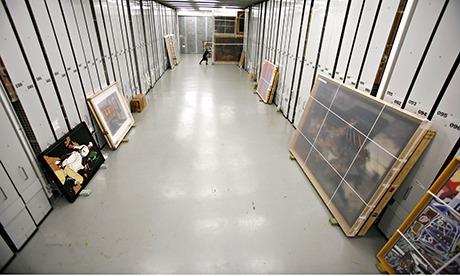
What will museums be like 50 years from now? The question is raised by an unprecedented nocturnal invasion of Tate Britain. Artist collective the Workers is to release robots to roam the world's foremost collection of British art at night. Electric eyes will scan the Turners. Digital brains will digest the Hogarths.
The Roastbeef of Old England. Scans as comical. Ha ha.
The future is not easy to predict. Once people thought powdered mash was the future. But the Smash martians were wrong. The earthlings still prefer, given the time, real mashed potatoes. And as George asked in Seinfeld, where are the flying cars? I thought there'd be flying cars by now.
But if robots roaming Tate Britain are piquant, another news item indicates the way cultural life is actually going. A bookless library has opened in San Antonio, Texas, dedicated to e-reading. Will there one day be artless museums too?
We're already on the way there. It's not just that all major museums now make much if not all of their collection visible on websites and apps. The next stage has been available for a long time at – of all places – London's National Gallery.
Here you can sit with a coffee and explore the entire collection on a screen, sitting in a comfy chair. Obviously, it's intended as an aid to understanding the paintings themselves. But it could be taken further.
There could be National Galleries in every town. At each one you would enjoy the shop, the cafe, and a comfortable lounge lined with screens to explore the collection.
What about the actual paintings? Here, Tate has blazed the trail, establishing that a gallery has no responsibility to show all of its collection but can keep much of it in a hi-tech store while showing some in its network of galleries and making more available online. The entire collection could be stowed away in secure vaults in the coming age of the artless gallery.
But there's a better way. Paintings could be divided between the many branches of a national museum on a rotational basis – just as the National Gallery is currently touring its top Manet to regional galleries. So, at the Liverpool branch of the National Gallery, you could see the entire collection digitally then examine some choice painting such as Piero della Francesca's Baptism of Christ, for real, in the "analogue" room.
Christ – my head is spinning. Futurology is freakish when it all seems so possible, when the sci-fi world is already half-here, even if it's not the half with the rocket cars and the moonbases but the robots roaming the Tate.

